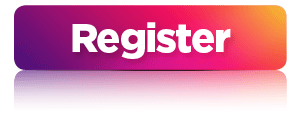 Viqui Dill has been a practicing technical communicator for 27 years. Her projects ensure excellent field execution so that clients perform their jobs smoothly without having to worry about the tools and systems they use.
Viqui Dill has been a practicing technical communicator for 27 years. Her projects ensure excellent field execution so that clients perform their jobs smoothly without having to worry about the tools and systems they use.
Viqui is enthusiastic about personal and community connection. She speaks at professional conferences and personal events. She maintains a good relationship with educators and provides short-term mentoring to students and new hires. She is an unashamed advocate for Diversity, Inclusion and Belonging in every area of her life.
Active in her local community, Viqui serves as Worship Arts Pastor for her church, the exchange. She organized the Winchester Pride Worship celebration.
Viqui describes herself as “Technical writer, wife and mom, bass player, worship leader, I’m happiest when folks sing along with me.”
The Four Pillars of Crating Findable and Usable Content
Readers are raiders. Style Guides use to our advantage the way people’s brains work and get our audience back to work.
The purpose of this presentation is to start a discussion about how people read, reinforcing the cognitive science behind the elements of our Style Guides.
We’re going to look at the things we already know and put them together in a new way. These topics are part of the CPTC curriculum. As I was studying, I gained a new appreciation for how we do business. So let’s look at the tools we already know in a new way, based on the science behind our intuition.
Technical Communicators will intuitively know many of the lessons discussed and will feel empowered and encouraged to practice these principles in all our communication deliverables.
In this session, attendees will learn:
The presentation has four parts, each reinforcing Technical Communication principles we already use:
- How usability heat maps validate our Style Guides and Content Strategy.
- How creating simple User Profiles streamlines content creation and document approval processes.
- How consistency of structure and vocabulary makes our content searchable, findable and discoverable.
- How plain language and improved accessibility benefit all readers, not just the diverse segments.
 Viqui Dill has been a practicing technical communicator for 27 years. Her projects ensure excellent field execution so that clients perform their jobs smoothly without having to worry about the tools and systems they use.
Viqui Dill has been a practicing technical communicator for 27 years. Her projects ensure excellent field execution so that clients perform their jobs smoothly without having to worry about the tools and systems they use.

